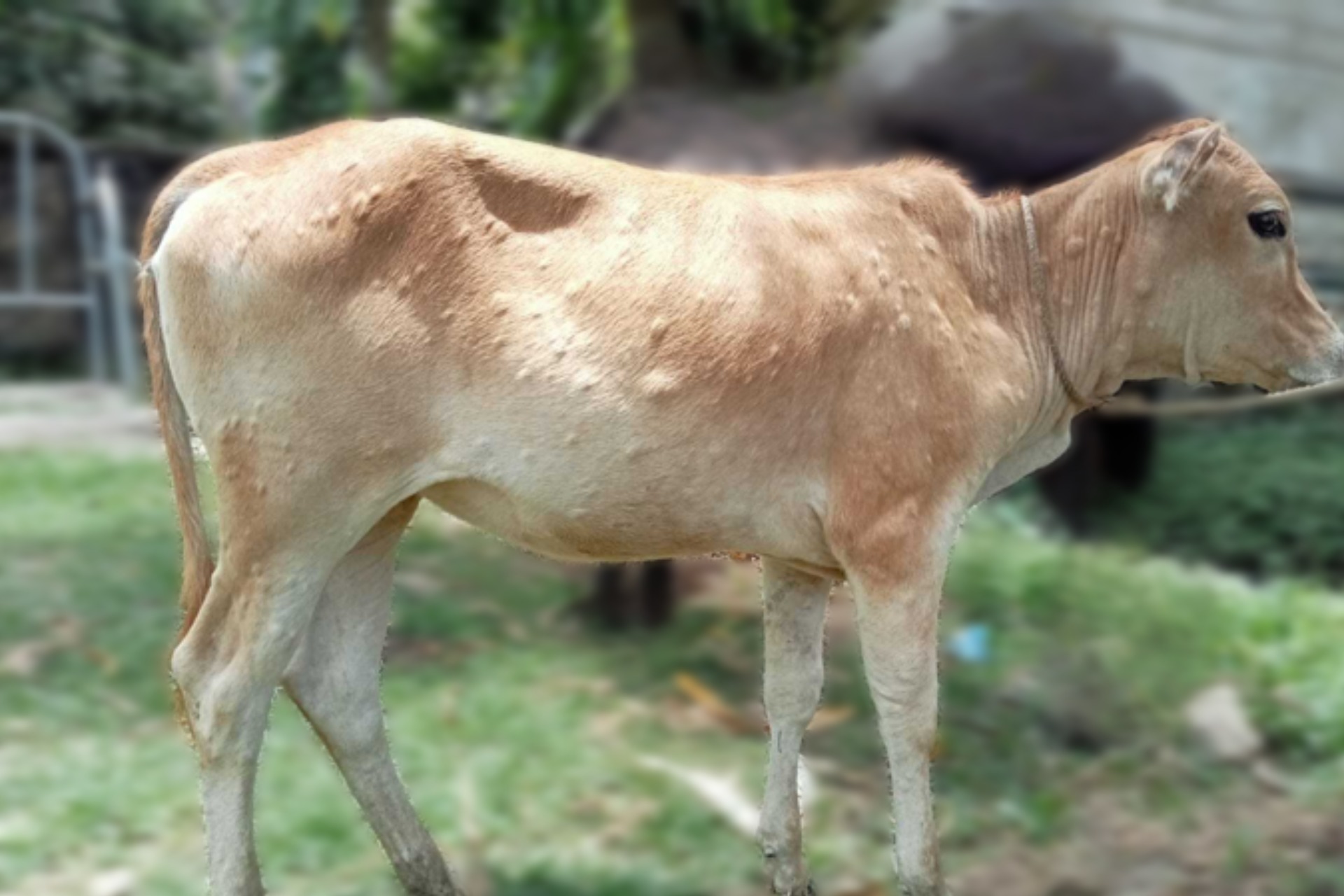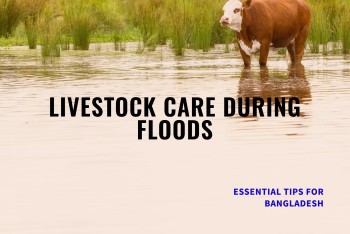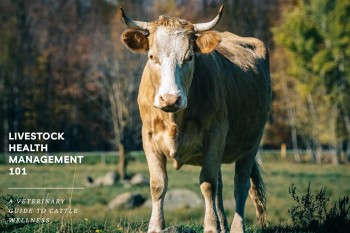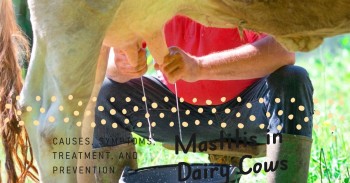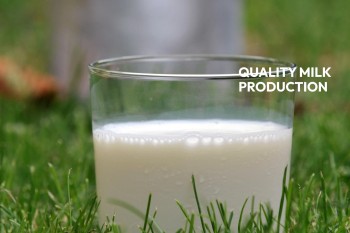Managing Lumpy Skin Disease in Cattle: Effective
Treatment Options and Best Practices
Understanding Lumpy Skin Disease in Cattle
Lumpy skin
disease is a highly contagious viral infection that affects cattle. It is
caused by the lumpy skin disease virus (LSDV) and primarily affects bovines.
Understanding the nature of this disease is crucial for effective management
and prevention. Lumpy skin disease is characterized by the formation of nodules
or lumps on the skin of affected animals. These nodules can appear on various
parts of the body, including the head, neck, limbs, and genitals.
The disease is
transmitted through direct contact with infected animals or through the bites
of certain insects, such as mosquitoes and ticks. Once an animal is infected,
the virus replicates in the lymph nodes and spreads throughout the body,
leading to the formation of nodules. These nodules can be painful and may cause
discomfort to the animal, leading to decreased feed intake and weight loss. In
severe cases, lumpy skin disease can be fatal.
Signs and Symptoms of Lumpy Skin Disease
Recognizing the
signs and symptoms of lumpy skin disease is essential for early detection and
prompt treatment. The initial symptoms of the disease may include fever, loss
of appetite, and depression. As the disease progresses, nodules start to appear
on the skin. These nodules are typically firm and can range in size from a few
millimeters to several centimeters in diameter. They may be single or multiple
and can be found all over the body.
In addition to
the visible nodules, other symptoms may include excessive salivation, nasal
discharge, and lacrimation. Affected animals may also experience difficulty in
breathing or swallowing due to the involvement of the respiratory and digestive
systems. It is important to note that the severity of symptoms can vary among
individual animals, with some showing mild signs while others may exhibit more
severe clinical manifestations.
Diagnosis and Prevention of Lumpy Skin Disease
Accurate and
timely diagnosis is crucial for effective management of lumpy skin disease.
Veterinarians can diagnose the disease based on clinical signs, laboratory
tests, and histopathological examination of the nodules. Polymerase chain
reaction (PCR) testing is commonly used to confirm the presence of the lumpy
skin disease virus in suspected cases. Additionally, serological tests can be
performed to detect the presence of antibodies against the virus.
Prevention of
lumpy skin disease is key to minimizing its impact on cattle populations.
Vaccination is an effective preventive measure and should be implemented in
areas where the disease is endemic or has the potential to spread. Vaccines for
lumpy skin disease are available and have been proven to be effective in
reducing the incidence and severity of the disease. It is important to follow
recommended vaccination schedules and ensure proper storage and administration
of the vaccines.
Treatment Options for Lumpy Skin Disease
Currently,
there is no specific antiviral treatment available for lumpy skin disease in
cattle. However, supportive therapy can be provided to affected animals to
alleviate their symptoms and promote recovery. This may include the
administration of non-steroidal anti-inflammatory drugs (NSAIDs) to reduce pain
and inflammation. Additionally, wound management and proper nutrition are
essential for the overall well-being of the affected animals.
It is important
to note that prompt isolation of infected animals is crucial to prevent the
spread of lumpy skin disease within the herd. Infected animals should be
separated from healthy ones and placed in a designated quarantine area. Strict
biosecurity measures should be implemented, including disinfection of
equipment, proper disposal of carcasses, and restriction of movement of animals
to prevent the introduction or spread of the disease.
Best Practices for Managing Lumpy Skin Disease
Managing lumpy
skin disease requires a comprehensive approach that includes prevention,
surveillance, and control measures. Here are some best practices to effectively
manage the disease:
1. Vaccination:
Implement a vaccination program using approved vaccines to protect the herd
from lumpy skin disease. Consult with a veterinarian to determine the
appropriate vaccine and vaccination schedule for your herd.
2. Biosecurity:
Establish and maintain strict biosecurity protocols to prevent the introduction
and spread of lumpy skin disease. This includes controlling animal movements,
implementing quarantine measures, and practicing good hygiene practices.
3. Vector control:
Implement measures to control the insects that transmit lumpy skin disease,
such as mosquitoes and ticks. This may include the use of insecticides, insect
repellents, and environmental modifications to minimize insect breeding sites.
4. Surveillance:
Regularly monitor the herd for signs of lumpy skin disease and promptly report
any suspected cases to a veterinarian. Early detection and intervention are
crucial for effective disease management.
5. Education and
training: Provide education and training to livestock owners and workers on the
signs, prevention, and control measures for lumpy skin disease. This will help
ensure that everyone involved in cattle management is equipped with the
knowledge and skills to effectively manage the disease.
Vaccination Strategies for Lumpy Skin Disease
Vaccination is
a key strategy in the control and prevention of lumpy skin disease. There are
two main types of vaccines available for lumpy skin disease in cattle: live
attenuated vaccines and inactivated vaccines.
Live attenuated
vaccines contain weakened forms of the lumpy skin disease virus, which
stimulate the animal's immune system to mount a protective response. These
vaccines are generally administered subcutaneously or intramuscularly and
provide long-lasting immunity.
Inactivated
vaccines, on the other hand, contain killed or inactivated forms of the lumpy
skin disease virus. These vaccines are typically administered via injection and
require booster doses to maintain immunity. Inactivated vaccines are often used
in areas where the disease is not endemic or during outbreaks to control the
spread of the virus.
It is important
to consult with a veterinarian to determine the most appropriate vaccine and
vaccination strategy for your herd. Factors such as the disease prevalence,
herd size, and local regulations should be taken into consideration when
developing a vaccination plan.
Biosecurity Measures to Prevent the Spread of Lumpy Skin Disease
Implementing
proper biosecurity measures is essential to prevent the introduction and spread
of lumpy skin disease in cattle herds. Here are some key biosecurity practices
to consider:
1. Control animal
movements: Limit the introduction of new animals to the herd and minimize
contact with other herds. If animals need to be brought in, ensure they come
from a disease-free source and undergo proper quarantine procedures.
2. Isolate sick
animals: Immediately isolate any animals showing signs of lumpy skin disease
and place them in a designated quarantine area. This will help prevent the
spread of the disease to healthy animals.
3. Disinfection:
Regularly disinfect equipment, vehicles, and facilities to eliminate any
potential sources of infection. Use approved disinfectants and follow
recommended dilution rates and contact times.
4. Pest control:
Implement measures to control insects, such as mosquitoes and ticks, which can
transmit lumpy skin disease. This may include the use of insecticides, insect
traps, and environmental modifications to reduce insect breeding sites.
5. Training and
education: Provide training to farm workers on biosecurity protocols and ensure
they understand and follow them diligently. Regularly communicate and reinforce
the importance of biosecurity measures to all personnel involved in cattle
management.
Quarantine Protocols for Infected Cattle
Implementing
proper quarantine protocols for infected cattle is crucial to prevent the
spread of lumpy skin disease within the herd. Here are some key steps to follow
when establishing a quarantine area:
1. Identify a
suitable quarantine area: Choose a separate location on your farm that is
isolated from the main herd and has appropriate facilities to house and care
for the quarantined animals.
2. Isolate
infected animals: Immediately separate any animals showing signs of lumpy skin
disease from the healthy ones and place them in the designated quarantine area.
Ensure there is no direct or indirect contact between the two groups.
3. Provide proper
care: Ensure that the quarantined animals receive appropriate veterinary care,
including supportive therapy and wound management. Follow the recommended
treatment protocols and monitor the animals closely for any changes in their
condition.
4. Restrict
access: Limit access to the quarantine area to essential personnel only. Implement
strict biosecurity measures, including the use of personal protective equipment
(PPE) and proper disinfection protocols when entering or leaving the area.
5. Duration of
quarantine: The duration of quarantine will depend on the specific
circumstances and recommendations from a veterinarian. Typically, the
quarantine period lasts until the infected animals have recovered and are no
longer shedding the virus.
Case Studies: Successful Management of Lumpy Skin Disease
Real-life case
studies can provide valuable insights into the successful management of lumpy
skin disease in cattle. Here are a few examples:
1. Case Study 1:
In a large dairy farm in an endemic area, early detection and prompt isolation
of infected animals were key to preventing the spread of lumpy skin disease.
The farm implemented strict biosecurity measures, including regular
surveillance, vector control, and vaccination. The affected animals received
supportive therapy and were closely monitored. Through proactive management and
collaboration with a veterinarian, the disease was successfully controlled, and
the farm was able to resume normal operations.
2. Case Study 2:
In a small beef cattle herd, lumpy skin disease was introduced through the
purchase of infected animals. The owner immediately isolated the infected
animals and implemented strict quarantine measures. With the guidance of a
veterinarian, the herd underwent a vaccination program to protect the remaining
animals. Regular monitoring and surveillance were conducted, and any suspected
cases were promptly reported. The implementation of biosecurity protocols and
vaccination strategies resulted in the containment and eventual eradication of
lumpy skin disease from the herd.
These case
studies highlight the importance of early detection, prompt isolation, and
comprehensive management strategies in successfully managing lumpy skin disease
in cattle.
Conclusion
Managing lumpy
skin disease in cattle requires a multi-faceted approach that includes
understanding the disease, recognizing the signs and symptoms, implementing
preventive measures, and following best practices for treatment and management.
Vaccination, biosecurity measures, and proper quarantine protocols are
essential components of an effective disease control program. By adopting these
strategies and working closely with veterinarians, cattle owners can minimize
the impact of lumpy skin disease and protect the health and well-being of their
herds.
CTA: Consult
with a veterinarian to develop a comprehensive management plan for lumpy skin
disease in your cattle herd. Implement preventive measures, such as vaccination
and biosecurity protocols, to minimize the risk of infection. Stay vigilant and
promptly report any suspected cases to ensure early detection and prompt
intervention. Together, we can effectively manage lumpy skin disease and
safeguard the health of our cattle populations.

